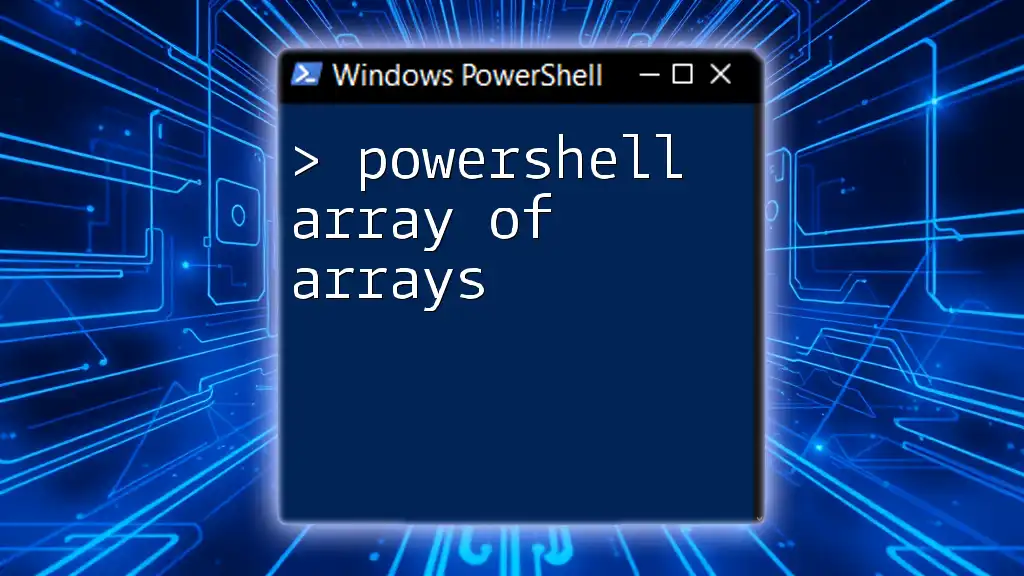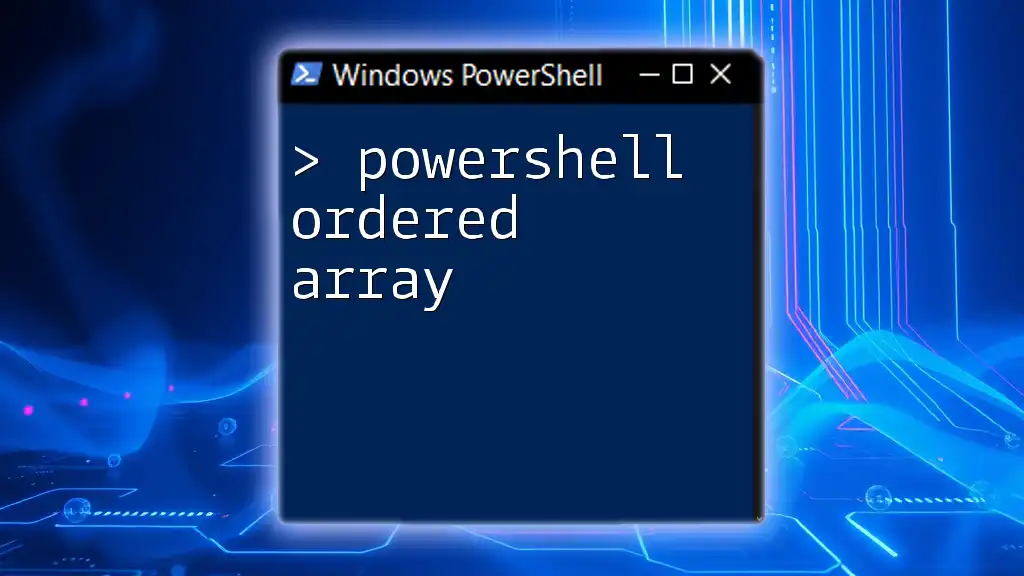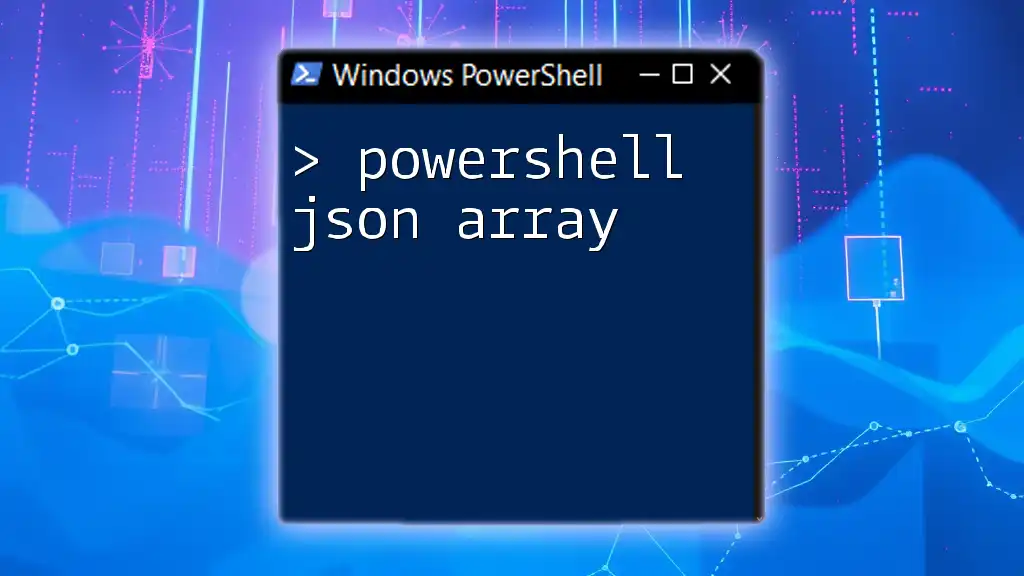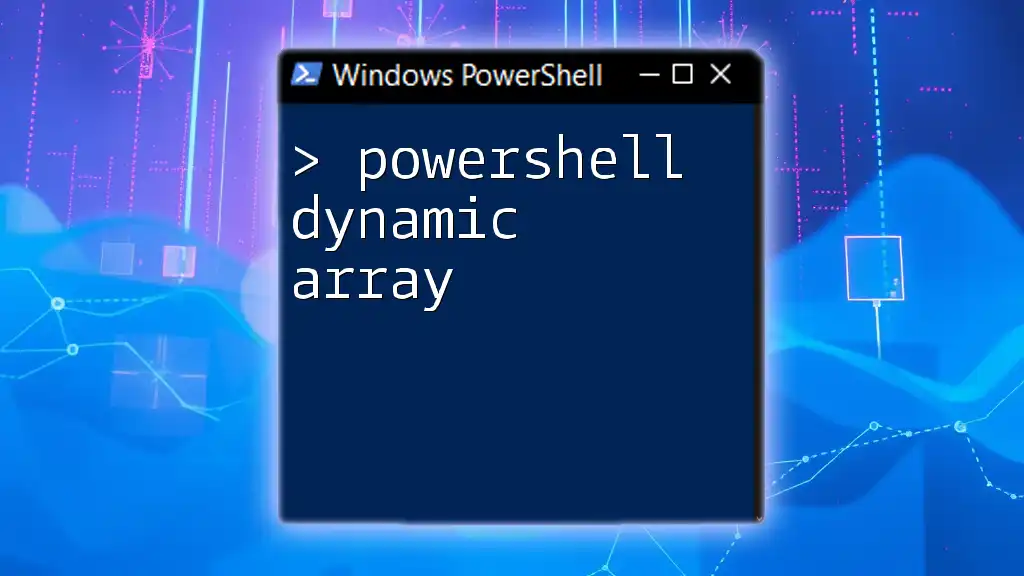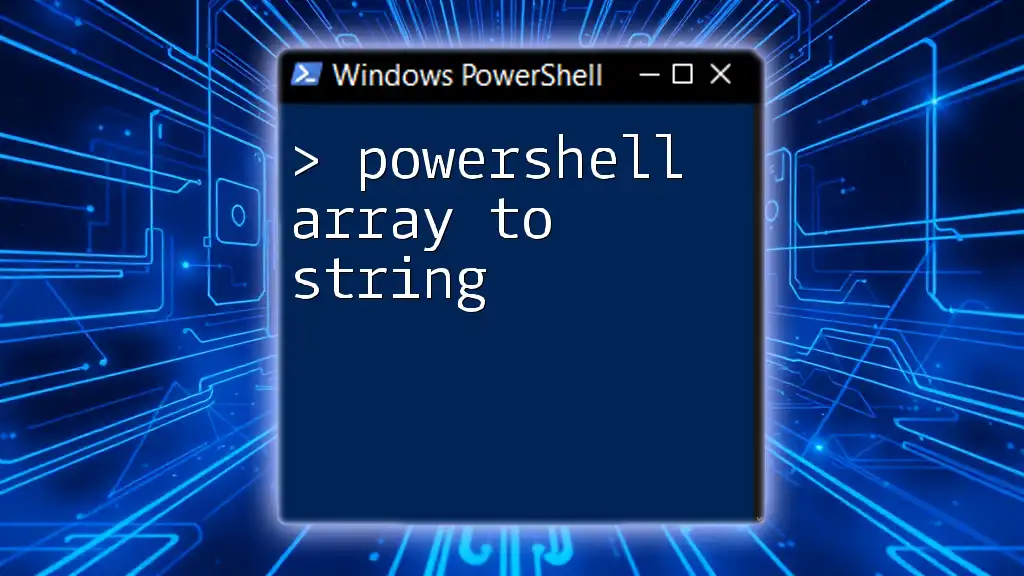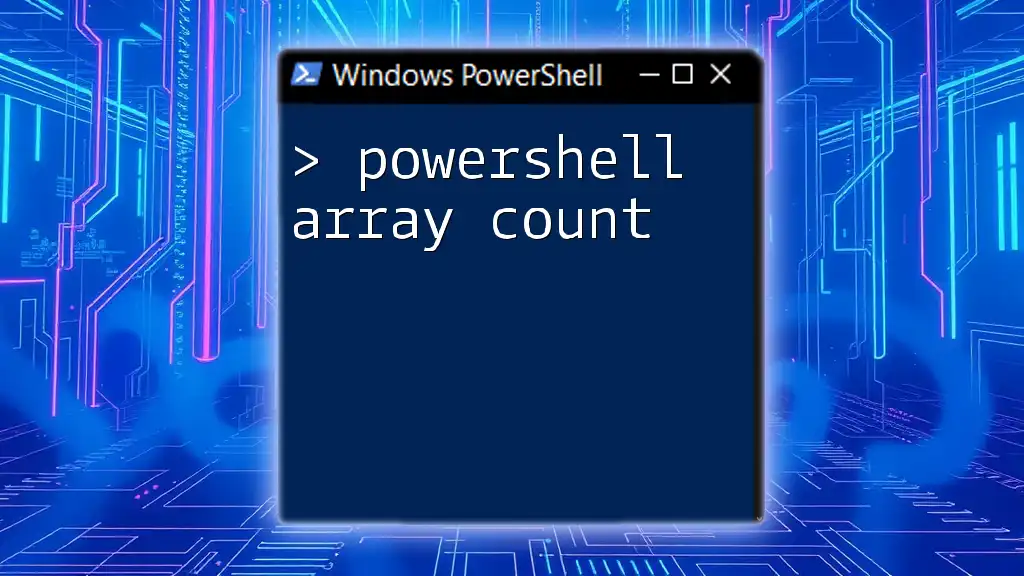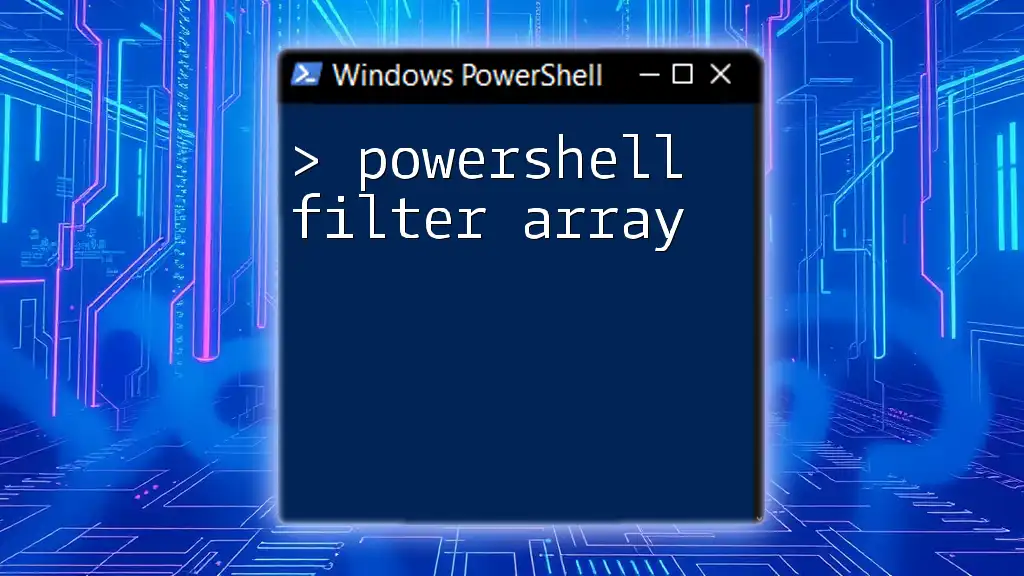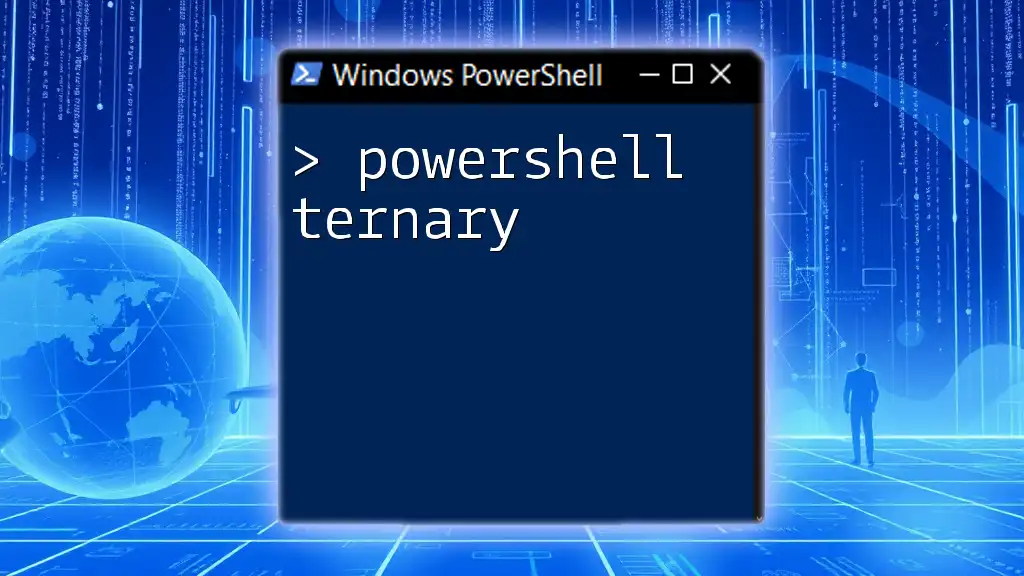In PowerShell, an array of arrays allows you to create a multi-dimensional array where each element is itself an array, facilitating complex data structures and organization.
Here's a code snippet demonstrating an array of arrays in PowerShell:
$multiArray = @(
@(1, 2, 3),
@("A", "B", "C"),
@(@("X", "Y"), @("Z", "W"))
)
Write-Host $multiArray[1][2] # Outputs: C
Understanding Arrays in PowerShell
What is an Array?
An array in PowerShell is a data structure that can hold multiple values in a single variable. Arrays allow you to store lists of items, such as strings or integers, and access these elements individually or as a group. To declare a simple array in PowerShell, you can use the following syntax:
$myArray = @(1, 2, 3, 4, 5)
This creates an array named `$myArray` that contains five integers.
Types of Arrays
PowerShell supports different types of arrays:
-
Single-Dimensional Arrays: These are the most basic form of arrays, consisting of one list of items. For example, `@("dog", "cat", "bird")` defines a single-dimensional array of strings.
-
Multi-Dimensional Arrays: These arrays can hold multiple lists, enabling you to create tables or matrices. You would define a two-dimensional array as follows:
$multiArray = @(@("Row1-Col1", "Row1-Col2"), @("Row2-Col1", "Row2-Col2"))
In this case, `$multiArray` contains two rows and two columns.
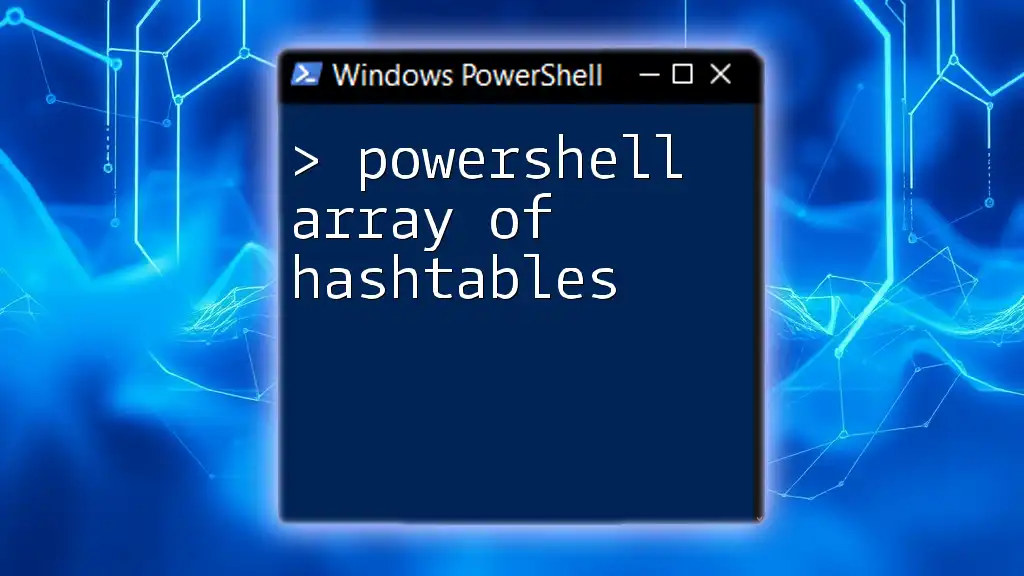
What is an Array of Arrays?
Defining an Array of Arrays
An array of arrays extends beyond single or multi-dimensional arrays by allowing you to nest arrays within an array. In this structure, each element of the main array can be another array itself. This flexibility allows for more complex data organization.
Why Use an Array of Arrays?
Using an array of arrays simplifies data representation, especially when dealing with complex data sets. For instance, you can store lists of related items, such as a list of countries, each containing lists of states or cities. This structure provides better organization, making it easier to retrieve and manipulate nested data.
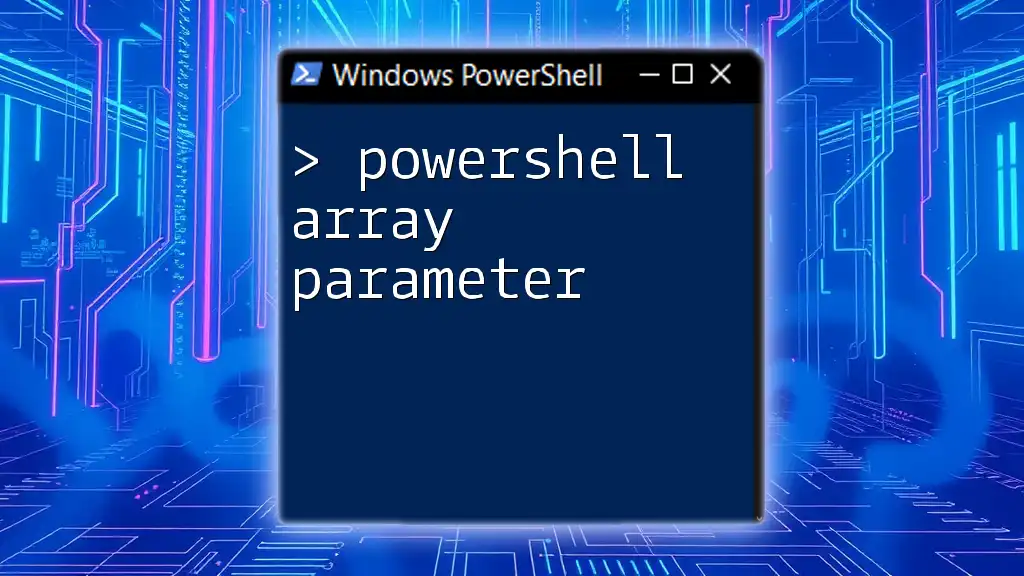
Creating an Array of Arrays in PowerShell
Simple Array of Arrays Example
To create an array of arrays in PowerShell, you can follow this structure:
$ArrayOfArrays = @(
@("Apple", "Banana", "Cherry"),
@("Dog", "Cat", "Rabbit"),
@("Red", "Green", "Blue")
)
This snippet creates a main array containing three sub-arrays, each listing three different items. Each sub-array is accessible through indexing, which allows you to efficiently manage your data.
Adding to an Array of Arrays
You might find the need to add more arrays to an existing array of arrays. This can easily be achieved with the following snippet:
$ArrayOfArrays += @("NewItem1", "NewItem2")
In this instance, a new sub-array with two items is appended to the `$ArrayOfArrays`. It's worth noting that PowerShell automatically adjusts to the new structure, making it flexible for dynamic data management.
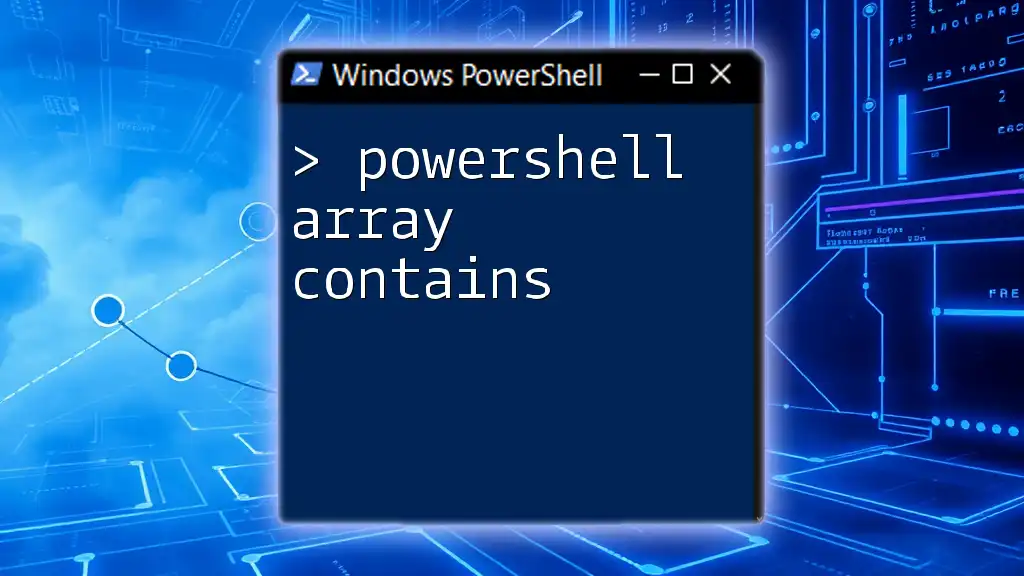
Accessing Elements in an Array of Arrays
Retrieving Individual Elements
To access elements stored in an array of arrays, you use indices in a similar manner as with standard arrays. For example, to access the second item in the first sub-array:
$ArrayOfArrays[0][1] # Output: "Banana"
Here, the first index refers to the sub-array, while the second index refers to the specific item within that sub-array.
Looping Through an Array of Arrays
Using loops provides a straightforward approach to process each element within your array of arrays. The following code demonstrates how to iterate through both the sub-arrays and their items:
foreach ($subArray in $ArrayOfArrays) {
foreach ($item in $subArray) {
Write-Output $item
}
}
This nested loop structure allows for comprehensive data processing, as it systematically evaluates each item found in each sub-array.
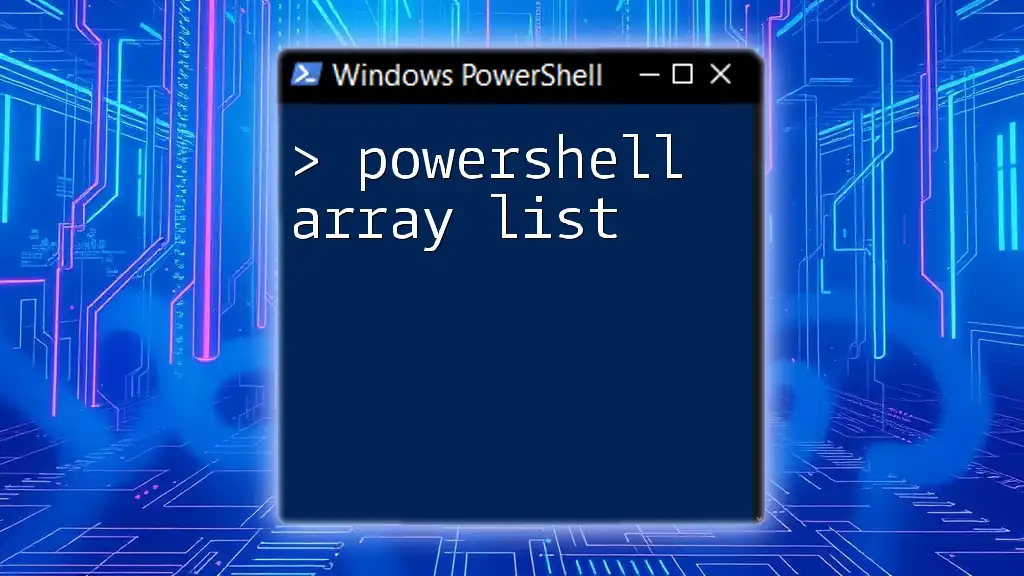
Manipulating an Array of Arrays
Modifying Elements
Occasionally, you may need to modify elements within an array of arrays. For example, if you want to change "Dog" to "Ferret" in the second sub-array, use this snippet:
$ArrayOfArrays[1][0] = "Ferret"
This modification highlights the adaptability of an array of arrays, allowing for quick updates to the stored data.
Removing Sub-Arrays or Elements
Removing items from an array of arrays is equally straightforward. To remove the entire second sub-array from `$ArrayOfArrays`, you can leverage the `RemoveAt` method:
$ArrayOfArrays.RemoveAt(1) # Removes the second sub-array
Understanding how to manipulate your arrays efficiently ensures your script remains clean and maintains data integrity.
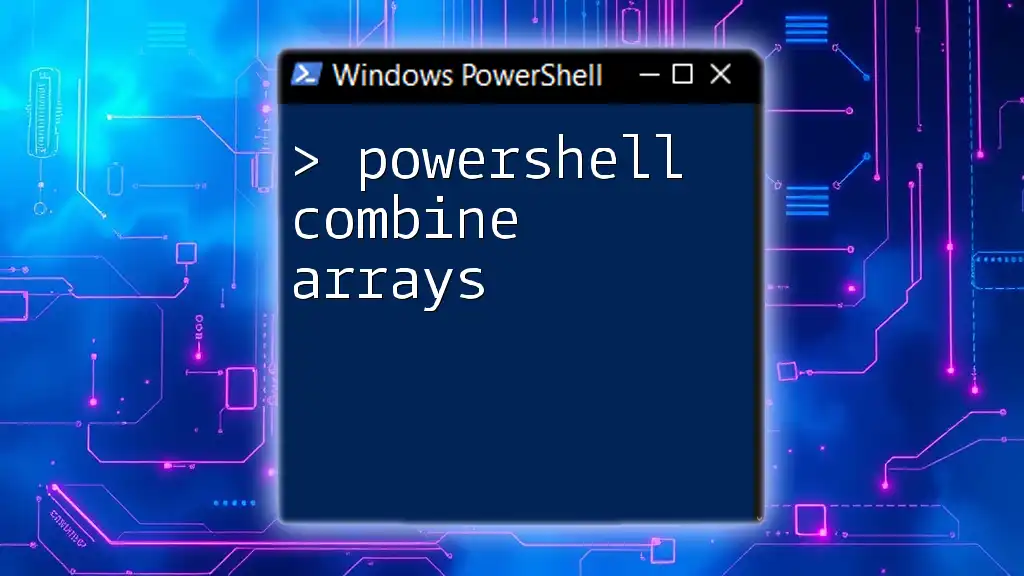
Practical Applications of Arrays of Arrays
Real-world Use Cases
An array of arrays can be applied in various scenarios. For instance, if you operate in data collection, you might want to categorize user data by demographic factors. Each sub-array could represent a group, containing individual user entries.
Another example is in configuration settings for scripts, where different settings could be organized by sections, making it easier to manage and alter configurations based on user roles or operational contexts.
Performance Considerations
It is essential to note that while arrays of arrays offer organizational benefits, there can be performance implications, particularly with large-scale data handling. For optimal performance, consider limiting nesting levels and monitor memory usage when working with sizable data sets.
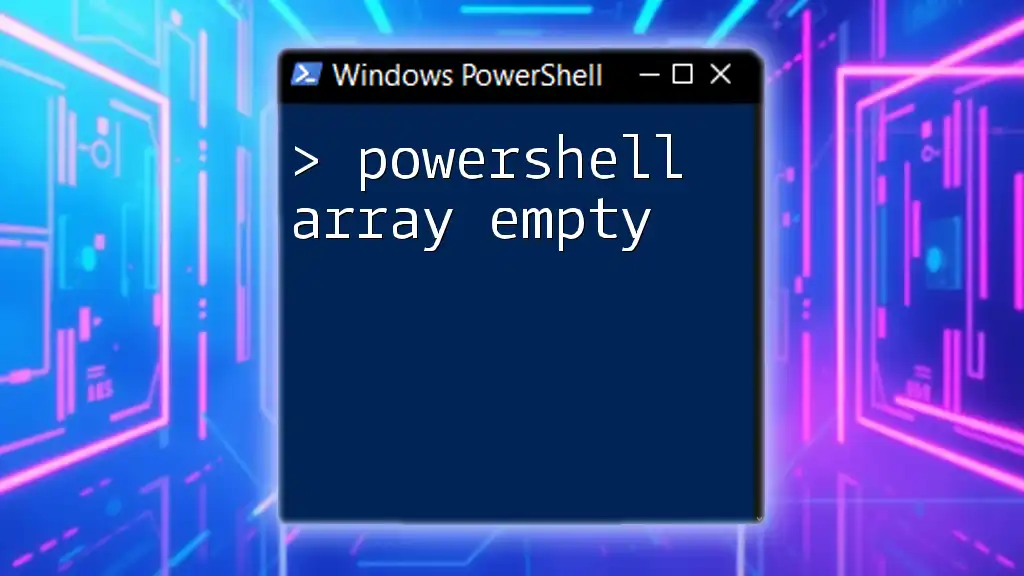
Conclusion
Understanding the concept of a PowerShell array of arrays is crucial for any PowerShell user. This data structure not only enhances data organization but also facilitates complex data relationships and manipulation. By practicing and experimenting with arrays of arrays, you can significantly increase your scripting capabilities and improve the efficiency of your PowerShell scripts.
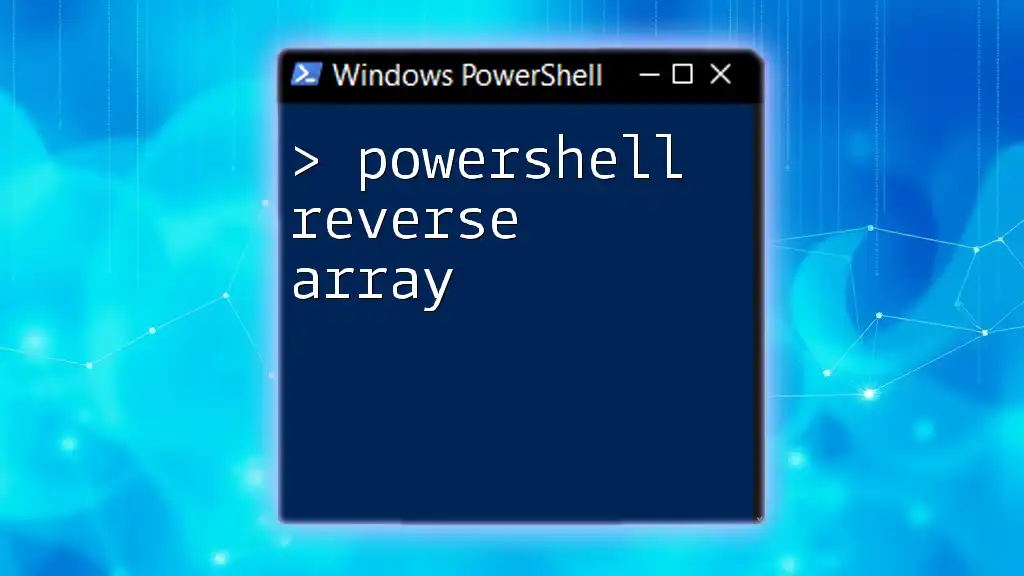
FAQs
What are the limitations of using arrays of arrays in PowerShell?
One limitation is potential performance degradation when handling deeply nested arrays, especially if the dataset is substantial.
Can you nest arrays of arrays indefinitely?
Yes, you can nest arrays of arrays as deeply as needed, though it's crucial to maintain readability and avoid excessive complexity.
How does PowerShell handle large arrays of arrays in terms of memory?
PowerShell dynamically allocates memory for arrays as they expand, but large datasets may lead to increased memory consumption, so care should be taken when working with extensive arrays.

